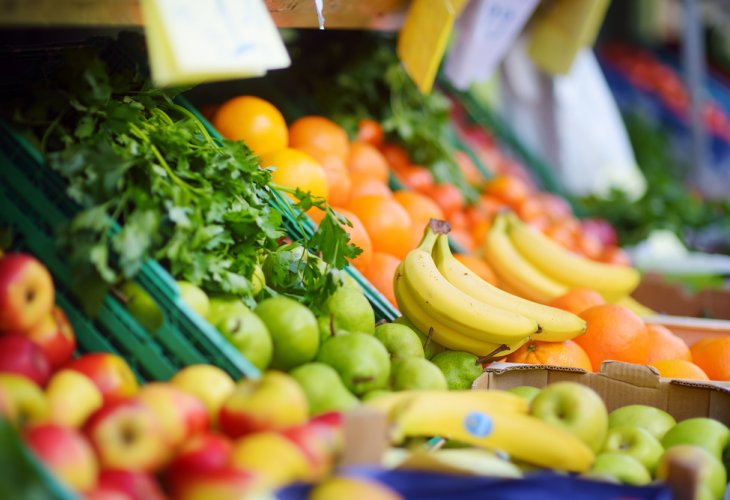Jewish Law
Shemittah Today: Sanctified Food for Everyone
Shemittah produce is holy, but how will you find it if you're not a farmer?
 (Photo: shutterstock)
(Photo: shutterstock)Every seventh year, all Jewish-owned land in Eretz Yisrael must remain uncultivated. This year is called Shemittah, and is often referred to as the Sabbatical year. All the agricultural produce of this year is hefker—ownerless, and anyone may take it. The produce is also imbued with a special holiness and must be treated with respect.
The laws of Shemittah are based on several Torah verses:
“But in the seventh year, you shall let [the land] rest and lie fallow, and the poor of your people will eat, and what they leave, the beasts of the field will eat.” (Shemot 23:11)
“When you come to the land that I am giving you, the land shall rest a Shabbat to Hashem. You may sow your field for six years ... but in the seventh year, the land shall have a complete rest, a Shabbat to Hashem...” (Vayikra 25:2-4)
Fruit and Vegetables During Shemittah
For vegetables, Shemittah applies according to the time of harvest, whereas kedushat shevi’it (the sanctity of the Sabbatical year) for fruit is determined according to the time of budding (when the flower-buds drop from the tree before fruit starts to grow).
Therefore, all fruits grown in Eretz Yisrael that budded in the Shemittah year, and all vegetables harvested during that year, have kedushat shevi’it.
Since there is no way of detecting whether a store’s products are from the Shemittah year, when purchasing produce from Eretz Yisrael it’s important to only buy in a store with kosher certification.
During and right after Shemittah year, such stores sell:
- Produce grown by non-Jews on land not owned by Jews in Eretz Yisrael
- Produce from the sixth year
- Produce grown in greenhouses using methods that ensure the plants are fully detached from the ground
Owning Land in Eretz Yisrael
A person who owns land in Eretz Yisrael must observe the halachot (laws) of Shemittah on that land. Cultivation is forbidden, and the produce must be declared hefker. This applies not only to fields but also gardens — and even flowerpots!
The declaration that the produce is ownerless does not have to be a verbal declaration; it’s enough to leave one’s field or garden open in such a way that people can come and take the produce. (They must be genuinely able to take it — if there is a guard dog, for instance, the dog must be removed.)
Therefore, the field or garden may not be locked, unless there are other items there (such as tools) that could be stolen. In such a case, the owner should hang a sign telling people that the produce is hefker and if they want to take it, they should knock at the door and ask for the key.
This does not mean that the person whose land it is may not take the produce himself. He may take for himself, even if he owns only one or a few trees (for example) and he ends up taking all the produce for his own family’s needs and leaving nothing for others.
However, no one may take more than he needs for his family for approximately a day (three meals). If more was taken inadvertently, it may still be eaten.
Otzar Beit Din — Shemittah Storehouses
Human nature being what it is, there are always people who seek to exploit a situation to their own advantage. In the Second Temple period, the Sages realized that unscrupulous people were going to fields and orchards during Shemittah, taking huge quantities of produce, and then selling it in the markets.
Therefore, the Beit Din (rabbinical court) in each community posted emissaries at town entrances who seized the produce (leaving the Shemittah “merchant” with enough for three meals) and placed the remainder in a special storehouse, called the Otzar Beit Din. Before Shabbat, the Beit Din would distribute the produce to the town’s families, according to their size.
Otzar Beit Din Today
The institution of Otzar Beit Din still exists today and organizes distribution centers for Shemittah produce. It works in a slightly different manner to in times past.
Today, the emissaries of the Beit Din contact farmers who observe the laws of Shemittah, and arrange for the farmers to hire workers to collect the produce and bring it to the towns. The Beit Din then compensates the farmers for the wages paid to the workers, and for transportation costs. No payment is made for the produce itself as this would be forbidden.
Since the Beit Din collects produce not for itself but for the community, it may collect large amounts and harvest in the regular manner.
Farmers are not obligated to come to any arrangement with the Beit Din for managing the produce. Instead, they may declare their fields and orchards ownerless; they can also do so for part of the day, and come to an arrangement with the Beit Din for the remaining hours.
Distribution of Shemittah Produce
Once the produce has been collected, the Beit Din then distributes it, charging customers only for the outlay they have already made on workers and transportation. This results in produce sold at or below the usual price in other years.
A person who collects Shemittah produce for himself may not subsequently decide to trade it. However, the Beit Din, which collects on behalf of the community, may weigh the produce and charge correspondingly, as the money paid compensates for the harvesting and transportation.
Since many rabbinical authorities hold that there is a mitzvah to eat fruit that has Shemittah sanctity, it is recommended to purchase from the Otzar Beit Din where possible, but this is not an obligation.

